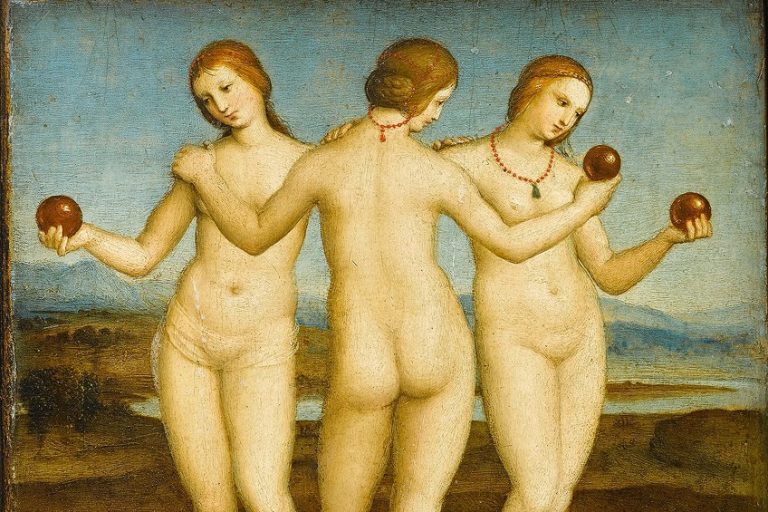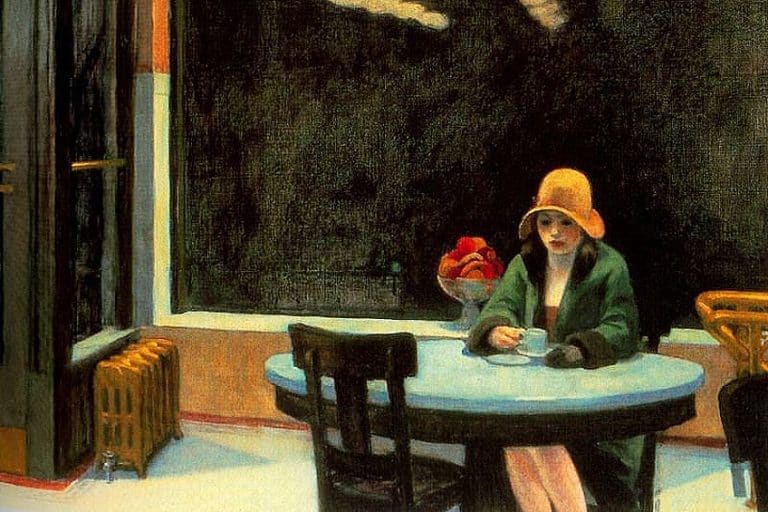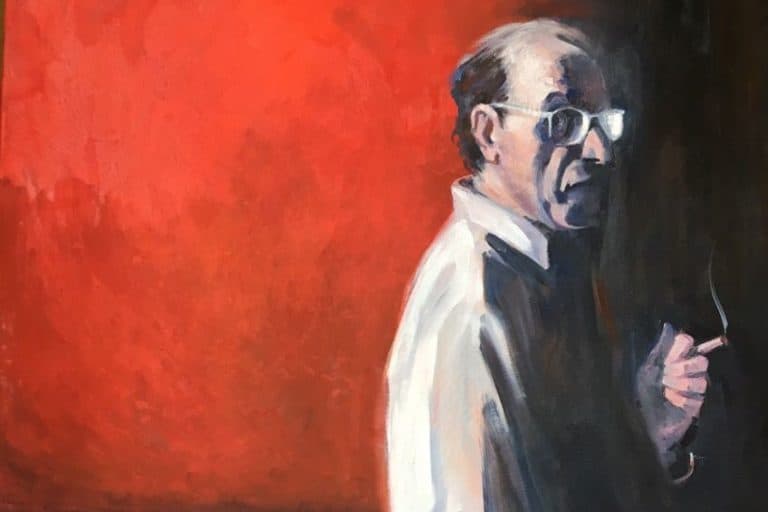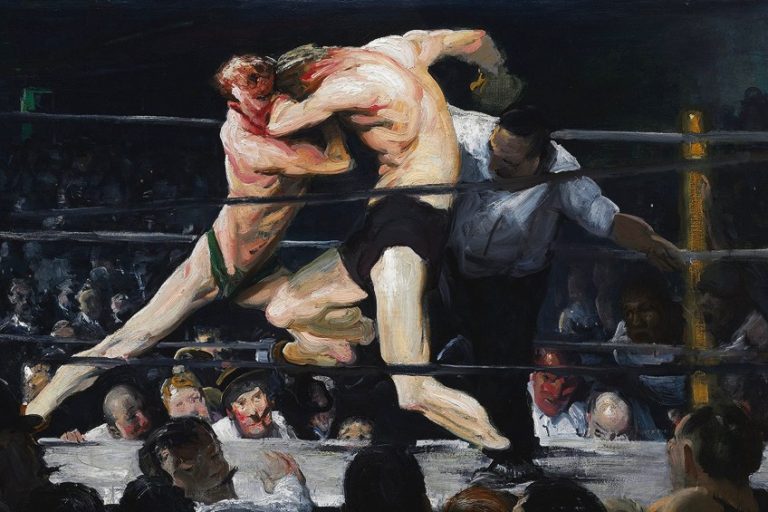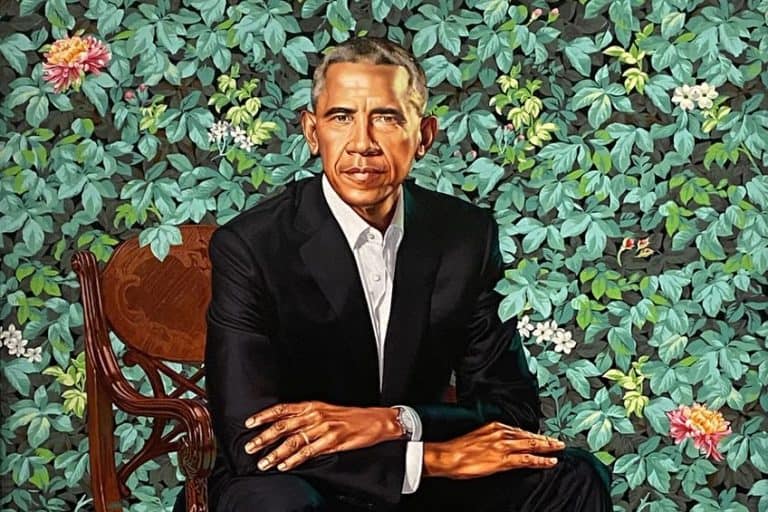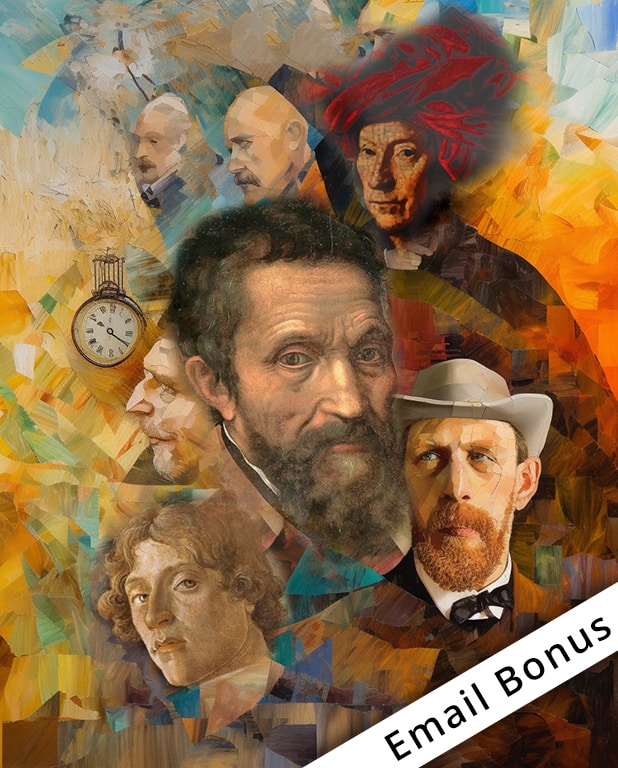“The Clothed Maja” by Francisco Goya – An Artwork Analysis
The Clothed Maja, painted by Francisco Goya between 1800 and 1805, stands as one of the most enigmatic and captivating portraits in Western art. This oil painting is a companion piece to the equally famous The Nude Maja, and together they challenge conventional depictions of female beauty and sensuality in the early 19th century. Goya’s skillful use of light and shadow, combined with his bold portrayal of the maja—a term referring to a fashionable woman of the lower classes—reveals his innovative approach to portraiture and his defiance of societal norms. The identity of the sitter remains a subject of speculation, adding to the painting’s allure and mystique. Through The Clothed Maja, Goya not only showcases his technical prowess but also offers a nuanced commentary on the intersection of fashion, class, and desire in his time.
Key Takeaways
- The Clothed Maja is a significant work by Francisco Goya that engages the viewer with its subtle expressiveness and historical intrigue.
- Housed at the Prado Museum, the painting’s preservation and exhibition reflect its importance in Spain’s cultural heritage.
- The artwork’s realism and the mystery surrounding its subject contribute to its enduring legacy in the art world.
The Clothed Maja Within Context
| Artist | Francisco Goya (1746 – 1828) |
| Date Created | 1800 – 1805 |
| Medium | Oil on canvas |
| Genre | Portrait, Romanticism |
| Period/Movement | Spanish Enlightenment, Romanticism |
| Dimensions (cm) | 97 x 190 |
| Series/Versions | Partner of The Nude Maja |
| Where Is It Housed? | Museo del Prado, Madrid, Spain |
| What It Is Worth | Priceless in terms of cultural and historical value |
The Clothed Maja stands as a noteworthy piece in the oeuvre of Francisco de Goya, the acclaimed Spanish painter whose works have left a lasting impact on the art world. Completed during the turn of the 19th century, this oil on canvas painting is often referenced in discussions about the transition from the Old Masters to the newer age of realism and expression in art. It depicts an alluring woman reclined and clothed in a contemporary dress of the period, inviting both admiration and intrigue for its history and the identity of its subject.

The artwork was one of the focal points in Goya’s collection, with its pair painting, The Clothed Maja, presenting the same figure without clothing, which was revolutionary and controversial for its time. The Clothed Maja, housed in the Prado Museum in Madrid, Spain, has captivated viewers with its subtle yet persuasive challenge to societal norms and the expression of sensuality.
Its creation, once owned by Manuel Godoy, a supporter of Goya, and its journey through various institutions before being displayed at the Prado, reflect its tumultuous yet celebrated existence.
Comparison With The Nude Maja
The Clothed Maja (La maja vestida) and The Nude Maja (La maja desnuda) are two of Francisco Goya’s most famous artworks. They are distinctive for their depiction of the same woman in identical poses, one clothed and one nude. The Nude Maja is particularly noted as one of the earliest Western artworks to portray full frontal nudity in a non-allegorical context. This daring portrayal was further complemented by the clothed version, which some suggest was created to appease the stricter sensibilities stemming from the Inquisition.

Controversies and Royal Patronage
Francisco Goya held the prestigious title of Royal Court Painter under both Charles III and Charles IV of Spain. The Clothed Maja, upon its release, became a subject of controversy as it alluded to the liberal depiction of its nude counterpart. The identity of the woman in the paintings, often referred to as a “maja,” remains unknown, yet her attire in The Clothed Maja is reminiscent of popular Spanish fashion of the time, which tied the work to contemporary cultural elements. The paintings drew attention from the Inquisition, who challenged their creation, making Goya’s work a direct reflection of the tensions between artistic expression and the censorship of the era.
Goya’s status at the royal court protected him but also placed him within a complex dynamic of societal expectations and personal creativity.
Analysis of The Clothed Maja
The Clothed Maja by Francisco Goya stands out as an arresting image of an unknown woman, graced by a masterful application of color and texture that bring the composition to life. This analysis delves into the key artistic components of the painting.
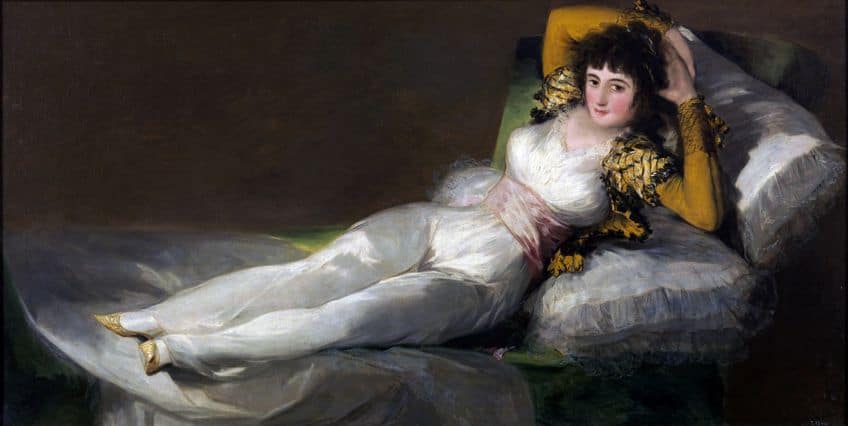
Subject Matter
The Clothed Maja features a reclined woman, clothed in a form-fitting dress, lying on a sumptuous green velvet divan. The identity of the woman remains anonymous across historical records.
This adds a layer of mystery to the subject matter.

Use of Color and Light
Goya employs a vibrant palette in the portrayal of the Maja, with her delicate, transparent clothing juxtaposed against the rich, deep greens of the divan. This contrast is further enhanced by the use of light, which softly illuminates her form.
The effect is in creating a sense of volume and three-dimensionality.

Texture
The texture in the painting is rendered with meticulous detail. The softness of the skin, the intricacy of the lace, and the lush velvet of the divan are depicted with precise brushstrokes.
This invites the viewer to imagine the tactile sensations of the fabrics.

Preservation and Display
Francisco de Goya’s The Clothed Maja is meticulously preserved and periodically displayed, reflecting its significance in art history. The Clothed Maja resides in the Museo Nacional del Prado in Madrid, Spain. Here, it is displayed alongside its counterpart, The Nude Maja, both are considered vital in Goya’s repertoire. The paintings were owned by Prime Minister Manuel de Godoy and have remained relatively undisturbed. Occasionally, The Clothed Maja ventures beyond the Prado for global exhibitions, bringing Goya’s work to a wider audience.
These international displays are less frequent due to the need for careful transportation and conservation concerns.
Legacy of the Artwork Today
The Clothed Maja remains a pivotal piece in the art world. Housed in Museo Nacional del Prado in Madrid, it is displayed prominently, often beside its counterpart, La maja desnuda, offering viewers a comprehensive perspective of Goya’s work on the same subject clothed and unclothed. Art historians and enthusiasts continue to debate the identity of the woman depicted in the painting, with numerous theories but no definitive answers. Despite the mystery, this painting is celebrated for its revolutionary approach to portraiture and the candid representation of the female form.
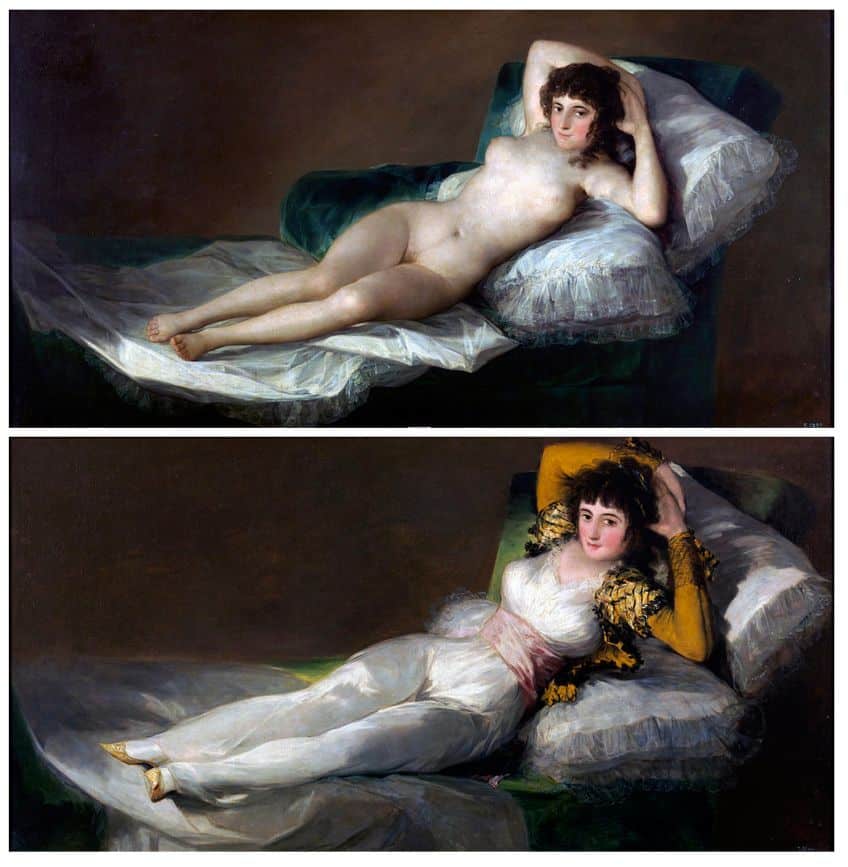
In modern discourse, The Clothed Maja is frequently referenced in discussions around femininity, power, and agency in art. It is not only a reflection of Goya’s artistry but also a symbol of societal attitudes towards these themes during the period it was created. The Clothed Maja has become more than a painting; it’s a cultural artifact representing an era of transition in art, reflecting changes in society at the time of its creation. Its influence persists, making it an invaluable part of the world’s artistic heritage.
Francisco Goya’s The Clothed Maja transcends mere portraiture, becoming a timeless reflection on societal complexities and artistic innovation. Its juxtaposition with The Nude Maja invites viewers to contemplate the contrast between public and private personas, challenging conventions of beauty and class distinctions. Goya’s masterful brushwork and his ability to infuse depth into the maja’s gaze create a captivating narrative that continues to captivate audiences centuries after its creation. As a testament to Goya’s genius, The Clothed Maja remains not just a portrait but a profound exploration of identity, power, and the intricacies of human expression.
Frequently Asked Questions
Who Was the Model for The Clothed Maja?
The identity of the woman depicted in The Clothed Maja is not definitively known. Speculation often suggests she could be the Duchess of Alba, with whom Goya was associated, or another muse of his, but historical evidence does not confirm any one person as the definitive model.
What Is the Historical Significance of The Clothed Maja in Art History?
The Clothed Maja holds significant historical value as a work that pushed the boundaries of art during its time. The painting is acclaimed for Goya’s candid portrayal of the subject’s direct gaze and relaxed posture, which represented a break from the traditional depictions of female modesty and formality in the late 18th and early 19th centuries.
How Does The Clothed Maja Compare With The Nude Maja?
The Clothed Maja and The Nude Maja are companion pieces with the same figure painted in two different states of dress. While The Nude Maja was striking for its frankness and unashamed display of the female form, The Clothed Maja depicts the subject wearing a suggestive and revealing dress, which still invites the viewer to contemplate the hidden form beneath.
What Controversy Surrounds the Creation of The Clothed Maja?
The creation of The Clothed Maja was met with controversy primarily due to its association with the earlier The Nude Maja. Its existence, which is thought to have been an attempt to deflect criticism from the nudity depicted in the first painting, became a subject of scrutiny. The paintings were considered scandalous at the time and led to troubles for Goya with the Spanish Inquisition.
Isabella studied at the University of Cape Town in South Africa and graduated with a Bachelor of Arts majoring in English Literature & Language and Psychology. Throughout her undergraduate years, she took Art History as an additional subject and absolutely loved it. Building on from her art history knowledge that began in high school, art has always been a particular area of fascination for her. From learning about artworks previously unknown to her, or sharpening her existing understanding of specific works, the ability to continue learning within this interesting sphere excites her greatly.
Her focal points of interest in art history encompass profiling specific artists and art movements, as it is these areas where she is able to really dig deep into the rich narrative of the art world. Additionally, she particularly enjoys exploring the different artistic styles of the 20th century, as well as the important impact that female artists have had on the development of art history.
Learn more about Isabella Meyer and the Art in Context Team.
Cite this Article
Isabella, Meyer, ““The Clothed Maja” by Francisco Goya – An Artwork Analysis.” Art in Context. June 4, 2024. URL: https://artincontext.org/the-clothed-maja-by-francisco-goya/
Meyer, I. (2024, 4 June). “The Clothed Maja” by Francisco Goya – An Artwork Analysis. Art in Context. https://artincontext.org/the-clothed-maja-by-francisco-goya/
Meyer, Isabella. ““The Clothed Maja” by Francisco Goya – An Artwork Analysis.” Art in Context, June 4, 2024. https://artincontext.org/the-clothed-maja-by-francisco-goya/.




